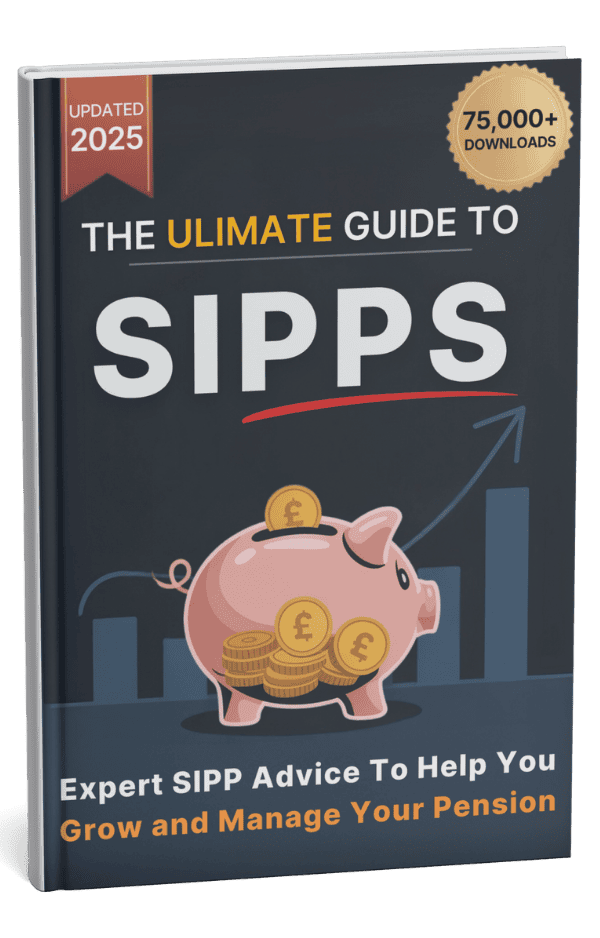
SIPPs Fees and Charges: 5 Key Ways to Save Big in 2025
See How Much Your Future Pension Income Could Be In Just 60 Seconds — No Fees, No Obligation.
How Much Could You Unlock?
Why Homeowners Trust Us
Try Our Free Pension Calculator
Quick, Safe Estimate

No Commitments
Key Takeaways
- SIPP costs typically include set-up, annual management, transaction, and withdrawal fees.
- Hidden fees, such as inactivity or exit charges, can erode your pension over time.
- Comparing providers and consolidating pensions can help reduce overall costs.
- Fee structures vary: some providers use flat fees, others charge a percentage of your portfolio.
- The total cost depends on your investment amount, chosen assets, and provider’s pricing.
- Always check for tiered pricing, discounts, and fee caps for larger portfolios.
- Use comparison tools and checklists to ensure you’re getting the best value.
- For a detailed checklist, visit our SIPPs Checklist.
Fees can make a considerable dent in your self-invested personal pension (SIPP), which is why it’s important to know exactly what SIPP fees and charges you should look out for.
Did you know that, according to research conducted by Profile Pensions in 2020, UK pension holders were paying on average more than five times the amount they should be in fees and charges?1
In This Article, You Will Discover:
In an effort to save you time, EveryInvestor's team of experts has collected the essential facts about SIPP fees by researching the costs associated with a variety of SIPP products on the market today.
Our content undergoes extensive quality and compliance checks before publication, and all our articles are regularly updated to make sure you’re getting relevant and useful information.
Read on to find out what you need to know about SIPP fees.
What Is a SIPP?
A Self-Invested Personal Pension (SIPP) is a UK pension product that gives you control over your retirement investments.
SIPPs allow you to choose from a wide range of assets, including funds, shares, ETFs, and commercial property.
They are popular for their flexibility and potential for higher returns, but require careful management of fees and charges.
Understanding SIPP Fees and Charges
SIPP fees are the costs you pay to set up, manage, and operate your pension.
These charges can be complex and vary widely between providers.
Understanding each fee type is essential to avoid unexpected costs and maximise your retirement savings.

Types of SIPP Fees Explained
There are several categories of SIPP fees you should be aware of.
Each fee type can impact your overall returns, so it’s important to know what you’re paying for.

Set-Up Fees
Some providers charge an initial fee to open your SIPP.
This can range from £0 for online applications to around £49–£120 for paper or specialist accounts.
Many leading providers, such as Hargreaves Lansdown, Nutmeg, and Freetrade, do not charge a set-up fee for standard accounts.
Annual Management/Admin Fees
These are ongoing charges for maintaining your SIPP.
They are usually a percentage of your portfolio (typically 0.1%–0.45% per year), but some providers use flat monthly fees.
Tiered pricing is common, with lower rates for larger portfolios.
For example, you might pay 0.45% on the first £50,000, 0.35% on the next £50,000, and so on.
Investment Management Fees

These are paid to fund managers for overseeing your investments.
They vary by fund and are in addition to platform fees.
Expect ongoing charges (OCF) from 0.1% to 1% per year, depending on the fund type.
Transaction and Dealing Fees
Every time you buy or sell investments, you may pay a transaction fee.
This can range from £1.50 to £11.95 per trade, depending on the provider and asset type.
Frequent trading can quickly increase your costs.
Transfer, Exit, and Drawdown Fees
Transferring your SIPP to another provider, withdrawing funds, or setting up income drawdown may incur additional charges.
Some providers charge nothing for cash transfers but may charge for asset transfers or drawdown setup.
Hidden and Additional Fees
Watch for inactivity fees, exit charges, or extra costs for holding certain assets like commercial property or overseas shares.
Always read the fee schedule carefully.
Typical SIPP Fee Examples in 2025
Here’s a summary of what you might expect to pay with leading providers:
*Always check the latest fee schedules and use a SIPP comparison tool for up-to-date details.
How SIPP Charges Are Paid
Most SIPP charges are deducted automatically from your account’s cash balance.
If there isn’t enough cash, the provider may sell some of your investments to cover fees.
It’s important to keep your account funded to avoid forced sales.
Government Levies and Taxes on SIPPs

In addition to provider fees, you may pay government levies and taxes:
- Stamp Duty: 0.5% on UK share purchases, 1% on Irish shares.
- Financial Transaction Tax: Applies to some overseas assets.
- PTM Levy: £1 on UK share deals over £10,000.
These are charged automatically and are not avoidable.
The Impact of Fees on SIPP Performance
Even small fees can have a big impact on your pension over time.
A 1% annual fee on a £100,000 pot reduces your returns by £1,000 each year.
Over decades, this compounds and can significantly erode your retirement savings.
Always factor in all costs when comparing providers and investment options.
How to Reduce SIPP Fees and Charges

Reducing your SIPP costs can boost your retirement fund.
Here are practical strategies to help you save:
- Choose low-cost funds: Index funds and ETFs often have lower fees than actively managed funds.
- Avoid excessive trading: Transaction fees add up, so a buy-and-hold approach can save money.
- Consolidate pensions: Larger pots may qualify for lower tiered fees or discounts.
- Compare providers: Use comparison tools to find the best value for your needs.
- Negotiate or seek discounts: Some providers offer fee reductions for larger investments.
- Monitor your account: Regularly review your statements for unexpected charges.
For a full checklist, see our SIPP requirements guide.
Comparing SIPP Providers’ Fees
Comparing SIPP fees is essential for maximising value.
Look at all costs, not just the headline annual fee.
Consider:
- Set-up and exit fees
- Annual management/admin charges
- Dealing and transaction costs
- Fund management fees
- Drawdown and withdrawal charges
- Fee caps and minimums
Use reputable comparison sites and read provider fee schedules in detail.

Using a SIPP Fee Calculator
A SIPP fee calculator can estimate your total costs based on your investment amount, trading frequency, and provider.
These tools help you compare options and predict long-term costs.
Remember, calculators may not include adviser fees, inflation, or future fee changes.

Fee Transparency and Disclosure
SIPP providers are regulated by the Financial Conduct Authority (FCA) and must clearly disclose all fees.
You should receive regular statements and reports detailing all charges.
If anything is unclear, ask your provider for a breakdown.
Common Questions
Set-up, annual management, transaction, fund management, transfer, and exit fees are the most common.
Always check for hidden charges like inactivity or drawdown fees.
Compare providers, choose low-cost funds, avoid frequent trading, and consolidate pensions to benefit from tiered pricing.
Some providers may charge inactivity, exit, or additional fees for certain assets.
Always read the full fee schedule and ask questions before signing up.
Fees reduce your net returns and can significantly erode your pension over time.
Even small differences in annual charges can add up over decades.
Many providers charge no set-up fee for online applications, but some may charge £49–£120 for paper or specialist accounts.
No, fees vary widely.
Some use flat fees, others charge a percentage of your portfolio, and some offer tiered pricing.
Visit our SIPPs Checklist for a comprehensive guide.
In Conclusion
Understanding and managing SIPP fees is crucial for maximising your retirement savings.
By comparing providers, choosing low-cost investments, and monitoring your account, you can minimise charges and keep more of your money working for you.
Always seek professional advice and use comparison tools to ensure you’re getting the best deal for your needs.
Disclaimer:
All information in this article was accurate as of July 2025. Fees, rates, and provider terms may change. Always check with your provider and consult a qualified adviser before making decisions.

Found an Error? Please report it here.






 100% private. No pressure. Just friendly guidance.
100% private. No pressure. Just friendly guidance.


